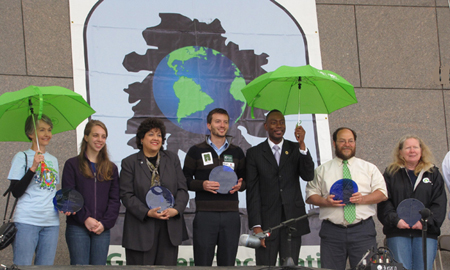Cincinnati named finalist to become WWF’s 2013 Earth Hour City Capital.
The World Wildlife Fund (WWF) has put together a list of the cities participating in the Earth Hour City Challenge. Within that list, WWF lists Chicago, Cincinnati and San Francisco as the three finalists in World Wildlife Fund’s Earth Hour City Challenge for 2013. More from World Wildlife Fund:
The cities were chosen by WWF and global management consultancy Accenture in recognition of the steps their community has taken to prepare for increasingly extreme weather and transition towards a 100% renewable energy future. The finalists were selected among 29 of the most forward-thinking cities in the country which have all committed to minimize their carbon footprint and ready their communities for the dangerous local consequences of climate change.
Cincinnati is developing a power aggregation agreement that would make it the largest city in the U.S. to supply its energy entirely from renewable sources and committing to reducing carbon emissions two percent annually for 42 years. The city is also working with residents, businesses and community leaders throughout the city to adopt climate-smart policies; expanding current tree planting efforts, promoting metro ridership, educating students about sustainability and conducting energy audits for local non-profits.

